Hi, friends!
I am so thrilled to partner with the folks at Forager Project to share my dairy-free story along with tips for going dairy-free with a baby and/or toddler.

Photo credit: Allie Lynn Photography
When my oldest son started showing symptoms of food intolerance or potential allergy, I was shocked and confused. I really didn’t think it was all that common and was in the camp that the food that a breastfeeding mother eats doesn’t generally affect a baby’s mood or digestive system all that much, except in rare cases. But, fast forward three years later and two babies with the same issue, and now I have a much different viewpoint. It’s more common than you think.
You can read more about my journey of breastfeeding a baby with MSPI (Milk Soy Protein Intolerance) here, but be warned. There are pictures of baby poop in that post! And at six weeks old, my now four-month-old started displaying the telltale signs of the same dairy issue, and I once again had to pull dairy out of my diet. Immediately his diapers looked normal, and the crazy thing was his “summer baby rash/acne” that had covered his body head to toe cleared up within 48 hours. It was pretty shocking.
The first time I went through this as a breastfeeding mother was challenging, even as a dietitian. Going dairy-free overnight didn’t leave me the luxury of a slow transition to more plant-based eating and dairy alternatives. That being said, I quickly found that Forager Project products were among my most favorite products, especially the cashewmilk yogurt and the sour cream alternative. Not only were most products soy-free (more than half of the babies who can’t tolerate dairy products can also not tolerate soy), but they are also made with clean ingredients, which is so important to me no matter what type of product I buy.

Photo credit: Allie Lynn Photography
What are “clean” ingredients? Clean ingredients are those you can recognize when you read them, yet the taste is incredible, never sacrificed for one second. These things are essential to me for what I eat, but as my dairy-free babe started to get old enough to venture beyond my dairy-free breastmilk, it became even more important! If you are kind of thrown into plant-based eating or at least dairy-free eating, it can be overwhelming to figure out what to feed your babe so that you meet all the nutrition requirements.
Today I’m sharing some tips on feeding dairy-free babies and toddlers so that whether your plant-based living was by choice or health necessity, you can feel comfortable and confident feeding your little one!
Photo credit: Allie Lynn Photography
A note about allergies and intolerances:
In the last few years, research has ruled out the need to avoid introducing the big eight or highly allergenic foods such as tree nuts, shellfish, peanuts, soy, dairy, eggs, fish, wheat, and soy. If you have a child who has demonstrated an intolerance or allergy to these foods through breastmilk or formula, of course, discuss food introduction with your pediatrician or allergist. We avoided dairy and eggs (baked eggs were fine) until my oldest son was two years old.
He still does better with dairy-free than dairy, but he can slightly tolerate it. So, luckily this time, when I went completely dairy-free, we already had many Forager Project plant-based products in the house (like the sour cream and yogurt) that we all found we loved and never stopped eating. However, when my son was just starting to consume solids, I remember feeling weary of the top 8 foods since he already had some food intolerances.
However, you should know that just because your child could not tolerate dairy protein does not necessarily mean you need to avoid foods like tree nuts (such as the cashew ingredients in many Forager Project products) unless you have a strong family history of food allergies or moderate to severe eczema is present. Food intolerances such as MSPI (milk soy protein intolerance), common in babies under 2, are because the digestive tract isn’t mature enough to tolerate those proteins, usually genetic. A true allergy is an immune response (versus digestive), and one does not indicate the risk of the other. Of course, you’ll want to discuss this with your pediatrician before moving forward, though!
Before we get started, a couple of notes for babies of all ages up till 1:
- Do not give honey as it has been known to cause infant botulism.
- Do not give a baby cow’s milk, even if your baby was previously on a dairy-containing formula. This is good news! This means that your baby will get plenty of calcium from breast milk or formula, and you don’t need to worry about calcium consumption, which is often a concern for moms of dairy-free children.
- Start fostering your child’s ability to determine hunger and fullness now. When they turn away, swat at the spoon, or otherwise try to let you know they are done with what they are eating, respect their decision! This will help them learn to honor their hunger and satiety cues as they get older!
- Avoid choking hazards like hard candy, chips, raw veggies/fruit, grapes or raisins, hard cheese, whole hot dogs, and popcorn until five.
4-6 Months Old
- The American Academy of Pediatrics recommends infants be exclusively breastfed or formula-fed for six months. However, if developmental milestones are met, along with your pediatrician’s approval, you may choose to start sooner.
- Remember that breastmilk or formula is still the primary source of nutrition for your little one.
- Start with single purees and/or baby cereal mixed with formula or breastmilk.
- Note that infant oatmeal is recommended over rice cereal due to arsenic contamination in rice.
6-8 Months Old
- Remember that breastmilk or formula is still the primary source of nutrition for your little one.
- At this age, eating is for fun! Eating is for a new experience and is not much for nutrition until the baby gets older.
- You can start with baby-led weaning or go the traditional route with baby cereal and/or purees. Or do a mix of both, there are no rules because eating is mostly for fun!
- You can start giving your baby small amounts of water with meals. A small open cup (like a shot glass) or teaching them to drink through a straw is a great way to introduce water!
- The baby will start to need more iron! Iron-fortified baby cereals or, if you are grain-free, high iron veggies like spinach, sweet potato, peas, broccoli, string beans, beet greens, etc.
- While it is not recommended to introduce cow’s milk, yogurt, and other pasteurized dairy is allowed. As a dairy-free mom, you’ll use Forager Project unsweetened cashewmilk yogurt or drinkable yogurt as your go-to!
What to feed baby:
- Breast milk or formula (or a mix of both), plus any of the following:
- Iron-fortified cereal (oats, barley); small pieces of bread and crackers
- Single fruit or veggie purees with an emphasis on iron-rich foods
- Pureed or mashed meats
- Pureed or mashed tofu (as tolerated)
- Pureed or mashed legumes
- Forager Project Unsweetened Cashewmilk Yogurt
- Forager Project Unsweetened Cashewmilk Probiotic Drinkable Yogurt
9-11 Months Old
- The baby will start to need more iron! Iron-fortified baby cereals or, if you are grain-free, high iron veggies like spinach, sweet potato, peas, broccoli, string beans, beet greens, etc. This is also a great time to introduce meat and seafood if you haven’t already.
- Remember that breastmilk or formula is still the primary source of nutrition for your little one.
- Baby’s pincher’s grasp is starting to develop so baby can begin eating bite-sized finger foods!
- Many people also introduce dairy foods like yogurt and cheese at this time, if they haven’t already. This is when it would be a good time to introduce Forager’s unsweetened cashewmilk yogurts (plan and vanilla bean) if you haven’t already!
What to feed baby:
- Breastmilk or formula
- Forager Project Unsweetened Cashewmilk Yogurt
- Forager Organic and Dairy-free Cashewmilk Yogurt soaked in oats and seeds, unsweetened.
- Forager Project Unsweetened Cashewmilk Probiotic Drinkable Yogurt
- Soft cooked veggies - bite size!
- Finger foods
- Protein foods (small bits of meat, poultry, boneless fish, tofu, and beans or lentils.)
- Iron-fortified cereal (oats, barley); small pieces of bread and crackers
Idea:
- Mash avocados with Forager Project Sour Cream and serve over toast in bite-size pieces. For a full meal, pair with Forager Project Unsweetened Yogurt and bite-size pieces of fruit. (shown in the photo above)
- Another idea would be toast with melted Forager Project cheese, cut into bite-size pieces!
1 Year +
- You may choose to wean your baby off breastmilk or formula after they turn a year old. The best substitutes for breastmilk/formula or cow’s milk are soymilk or pea milk, as they have a higher protein and fat content babies need. Other substitutes such as almond, cashew, or oat milk are not calorie-dense enough to substitute breastmilk or formula until your child is well over two years old.
- This is a great time to try branching out as you are comfortable with other probiotic-rich products. As baby weans off of formula or breastmilk or formula, they will need to get probiotics to support their digestive system elsewhere. This is also the time when you will need to be more mindful of their calcium intake. See suggestions below!
- Somewhere near this age (or maybe a little earlier), you may start offering snacks like dry cereal. Forager Project cereals are a great option because, with nutritious ingredients like navy beans and pea protein, they will be more filling for your little grazer than other options with more sugar! (Make sure to gauge your child’s readiness for crunchy snack foods, they may be closer till 2-3 years old when they are ready! We broke Forager Project Cereal Strawberry O’s in half before giving them to my son until he was over 2.5 years old, but that’s because he was a kid that would shove way too much in his mouth all the time! Each child is different!)
- Focus on offering as much variety of foods as possible, now more than ever! As your child grows and can start to refuse to foods, the broader base they have of exposure, hopefully, the more they will consume during their picky phase!
Photo credit: Allie Lynn Photography
Ideas to incorporate into your toddler’s meal:
- Whatever you are eating. We continue to eat plant-based dairy-free meals since our children can’t tolerate dairy well. We don’t eat separately because eating the same meals fosters more variety in the diet and more nutrient intake.
- Forager Project Cashewmilk Yogurt (all flavors)
- Forager Organic and Dairy-free Cashewmilk Yogurt soaked in oats and seeds, all flavors
- Forager Project Cashewmilk Probiotic Drinkable Yogurt (all flavors)
- Chickpea or Lentil Pasta with melted Forager Project Butter and sprinkled with Forager Project Cheese
*Note - if your younger toddler is starting to prefer sweeter foods (it happens to us all, especially if you have older children in the house), you can always mix unsweetened and sweetened versions of products like yogurts and drinkable yogurts etc. This worked well for us until our older son was about two!
When I first had to feed a dairy-free baby, I was overwhelmed looking for substitutes while simultaneously feeding a baby for the first time. This time around, even though my second son is also dairy-free I’m SO excited because I know I have great products from Forager Project to utilize! You can use many Forager Project plant-based products to swap out the ingredients in meals you would typically make for your baby or toddler with ease and delicious taste! These products will help you get the nutrition your child needs, like probiotics, calcium, and protein, and more, without added unnecessary ingredients!
Stay tuned for more as my younger son gets older. I’ll share a lot of what we are feeding him on IG (@hungryhobbyRD) and on the blog! Thank you again to my friends at Forager Project for teaming up with me to share my experience and these tips on feeding a dairy-free baby!
And PS Forager Project is offering Hungry Hobby readers this awesome coupon to try any of their products with a dollar off!

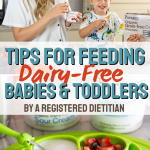

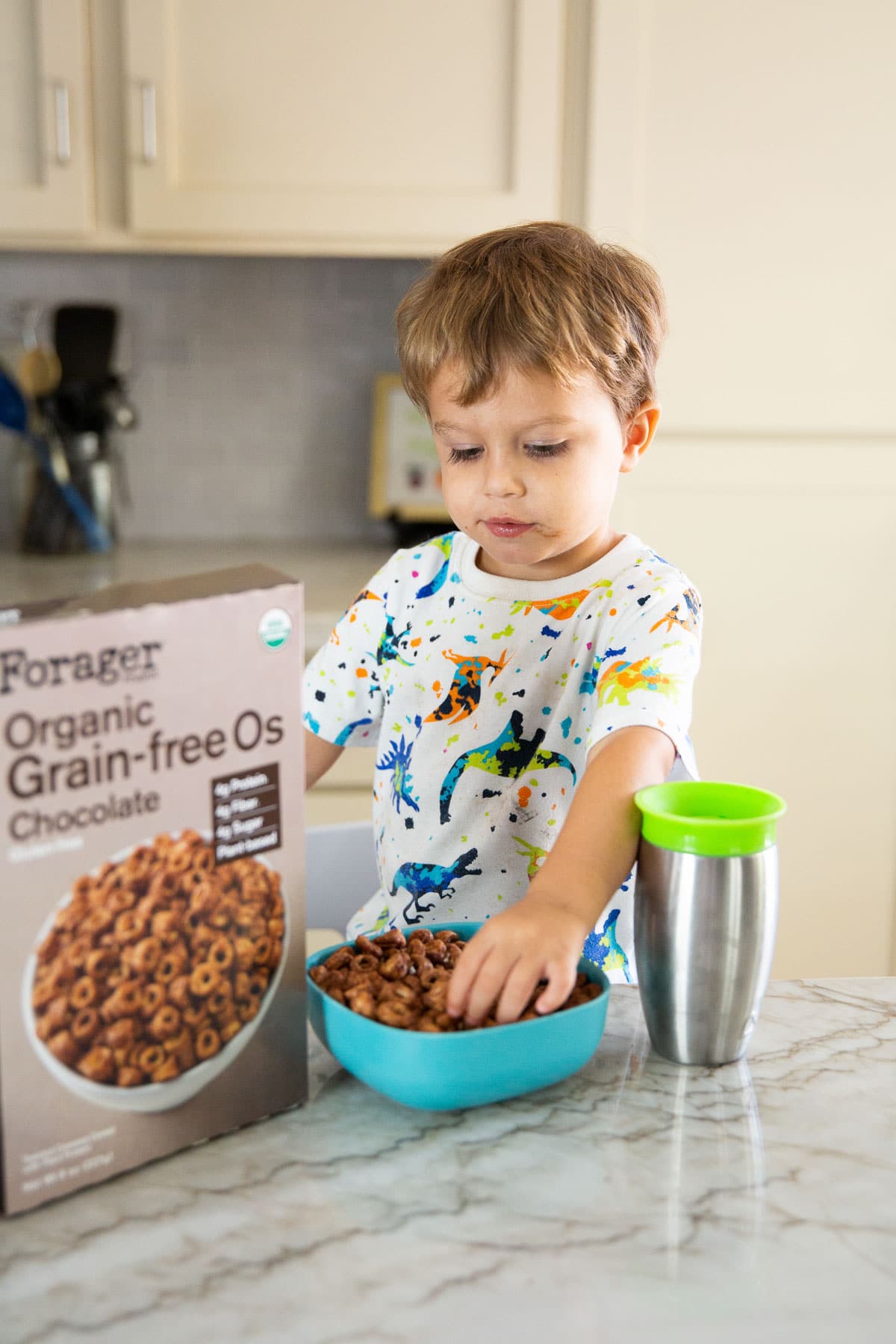
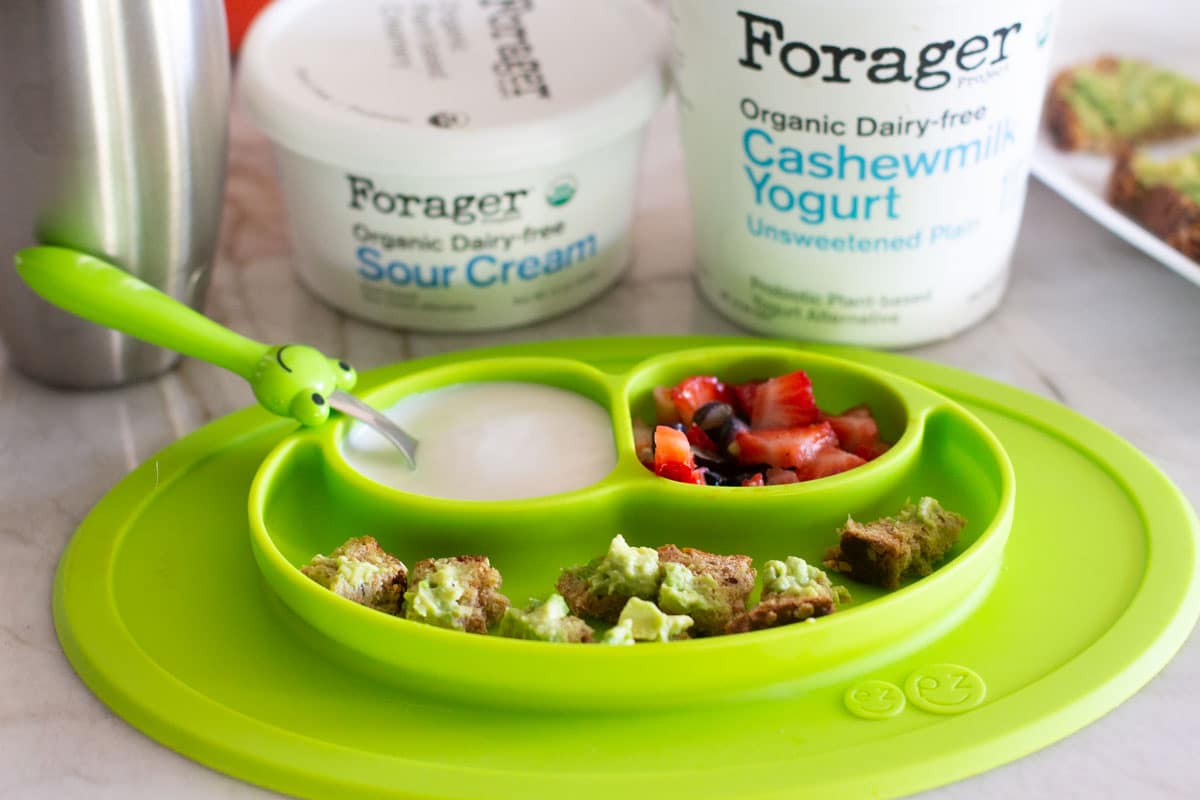
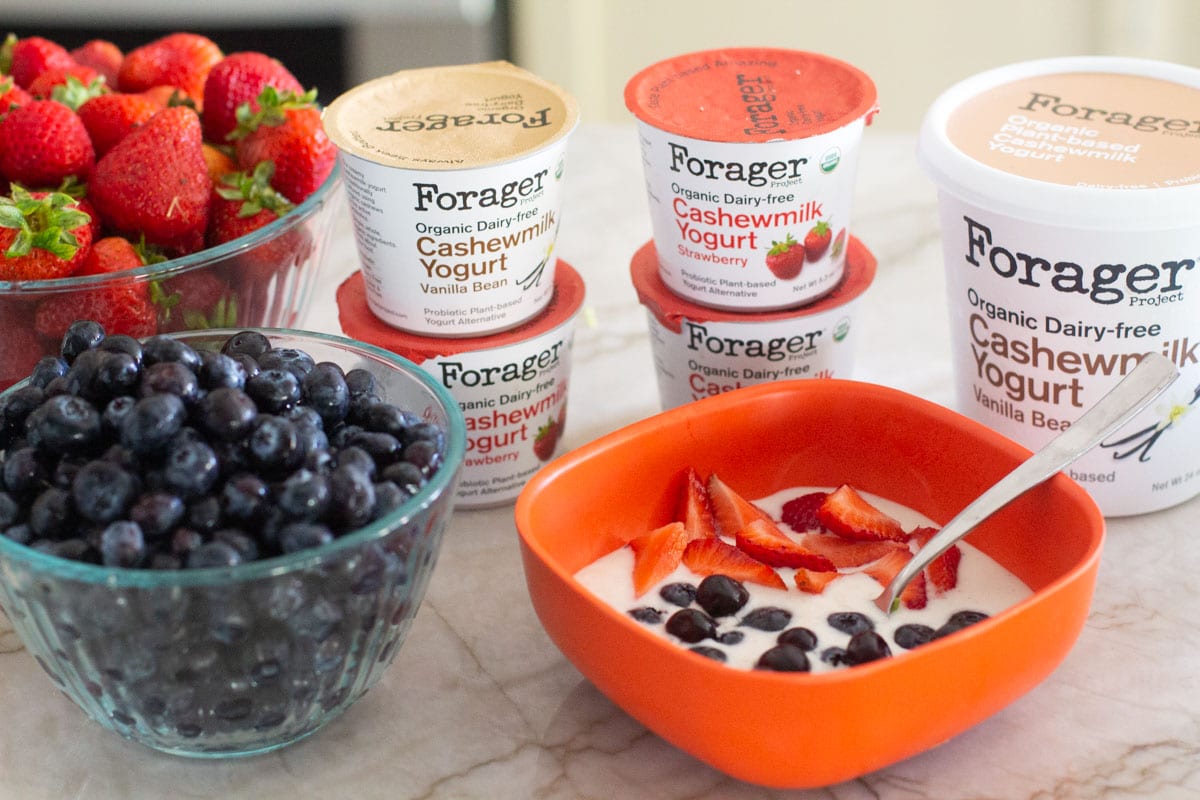




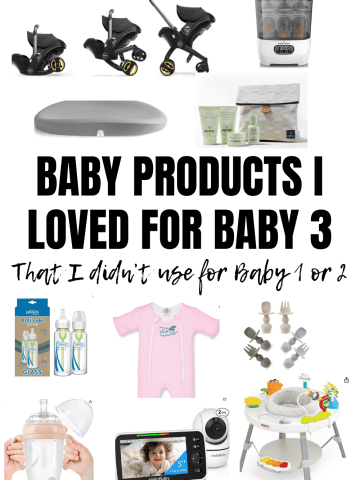

Elle Spark says
Hey Kalli, that amazing piece of content. In case i am dealing with an infant, is there any way to reduce fats and like other non-essential nutritions from the natural milk?
Kelli Shallal MPH RD says
Hi Elle, I'm not sure I understand the question. Babies and toddlers need lots of fat in their diet so you definitely don't want to reduce it!